The Power of Automation: Transforming Lives Beyond the Workplace
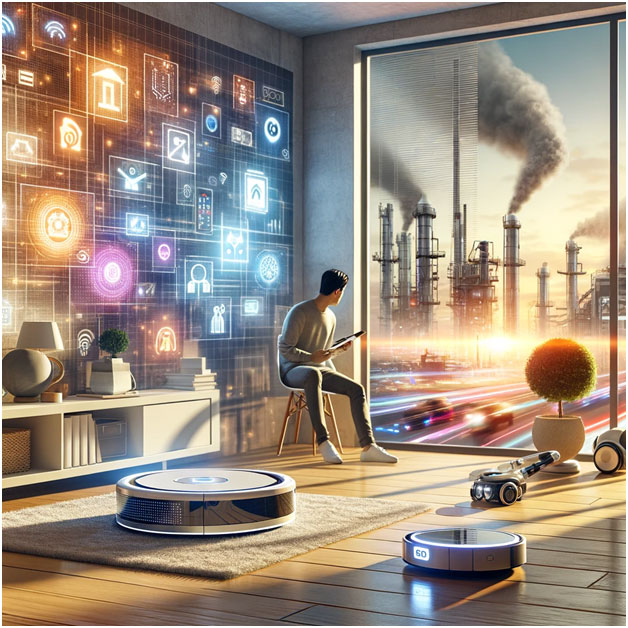
Image by ReminderCall via DALL-E
Automation is a bigger part of our lives than we realize, and we are benefiting more from its new applications all the time. Using technology to make products and apparatus that work for us, automation is booming in all areas of our lives and often minimizes or eradicates the need for human labor.
Generations of humans have been working on automating processes for thousands of years. Throughout history, curious engineers, keen to make life easier, created the first automated water wheels, automatic mills, spinning machines, and rudimentary conveyor belts to save manpower and increase production outputs.
Automation expanded alongside technology, moving way beyond simple manufacturing processes. In a world run largely with computer software and in recent years, the internet, we can automate many aspects of our home and work lives. Automation can maximize our productivity and save us time and money.
Automation in Everyday Life
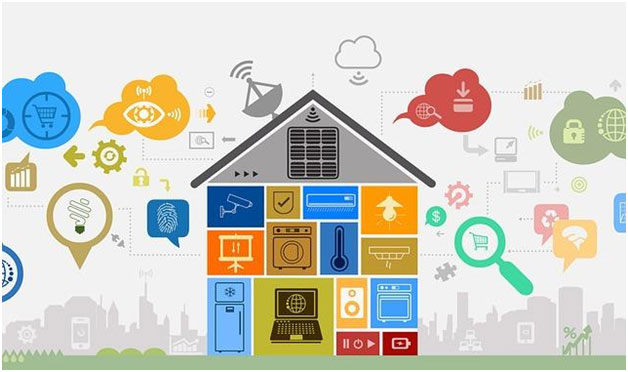
Image by Tayeb MEZAHDIA from Pixabay
Home Automation
With long working hours and busy family schedules, automation is a welcome advancement for many people in their home. Although some basic automatic appliances have been available for years, increased access to super fast internet speeds and new, affordable, smart home devices are helping people to streamline daily tasks and micro-manage their environment.
With the newest automated appliances and smart home technologies we can automate many devices such as:
- Heating and HVAC systems
- Hot water settings
- Home lighting adjustments
- Appliances such as washers, dryers, and refrigerators
- Entertainment devices
- Home security settings
Keeping up with household chores is also a major time issue for many households with little free time on their hands. For many people, there is simply not enough time in the day to get through their to-do list. Hiring outside help for chores such as cleaning and gardening is not a reality with everybody’s budget. Time spent doing household chores can now be dramatically reduced with devices like:
- Robotic vacuum cleaners
- Automatic pool cleaning robots
- Smart lawn mowers
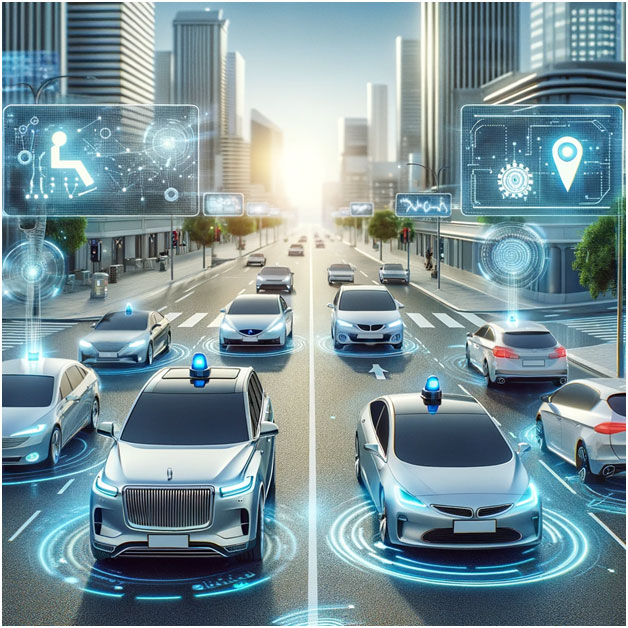
Image by ReminderCall via DALL-E
Transportation Automation
With the advancement of self-driving technology, the future of being on the road is set to become much easier and safer for all travelers. Still in its early stages, the automated technology used in self-driving vehicles is showing a lot of promise for fast advancement in the future.
Traffic accidents are a major cause of congestion, often making commutes miserable and getting our days off to a rough start. In areas that experience extreme and often dangerous weather, the potential for self-driving technology could be life-changing. By simply reducing accidents on the road caused by lapses in concentration and overtired drivers, we can go a long way to easing congestion and keeping everyone safer.
Not only set to change our potential commuting life, automation for vehicles is set to make a massive impact within the transportation industry, with the ability to safely move more goods on the roads.
Automation can also be a game changer for those of us who enjoy cross country travel. For many drivers, the work involved in getting to and from a long distance destination can make the trip stressful. With automation technologies, road trips will become safer, and more relaxing for everyone involved, opening up a world of travel to those who dislike the current climate of driving.
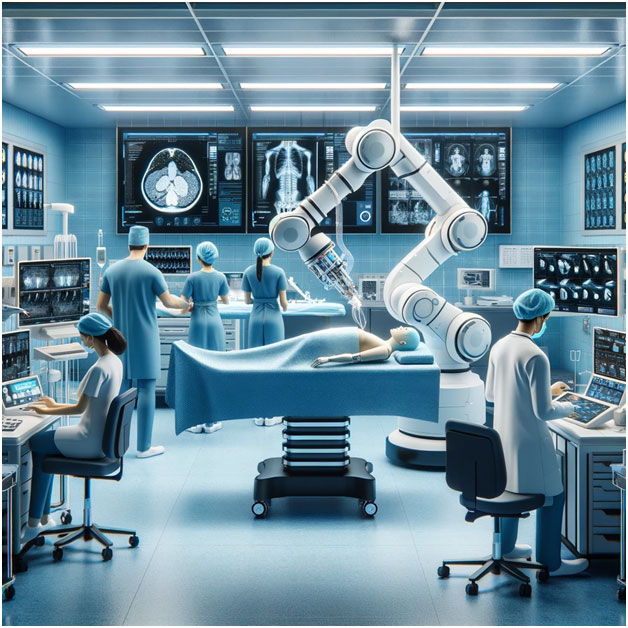
Image by ReminderCall via DALL-E
Healthcare Automation
Until the integration with HIPAA compliant software and communication programs, receiving healthcare was a particularly clunky process. With the adaptation of telemedicine, electronic health records, and systems for appointment reminders, we can stay on top of our health needs much more easily. You may have already come across some of these helpful systems such as:
- Appointment reminders and online check ins
- Convenient bill paying opportunities
- Safe and encrypted messaging systems with your doctors and healthcare providers
- Automated pharmacy systems sending alerts and refilling prescriptions
- Online electronic health records giving you access to test results and history
Automation has also changed the fabric of many medical services themselves. Robotic surgery techniques and automated diagnostic tools create faster, safer, and more accurate ways for physicians to diagnose and treat patients. Some robotic technology even allows surgeons to operate remotely, bringing their expertise to a greater area and benefiting more patients. Automation within hospitals for monitoring a patient’s status can also help to improve outcomes, as heart monitors and breathing equipment allow medical teams to stay alert of any and all changes.
The Economic Ripple Effects
Automation has been shaping our economy in a huge fashion since the industrial revolution. Over time, our increased production, lower costs, and elimination of more dangerous jobs has moved our economy forward, transforming industries and jobs as a result.
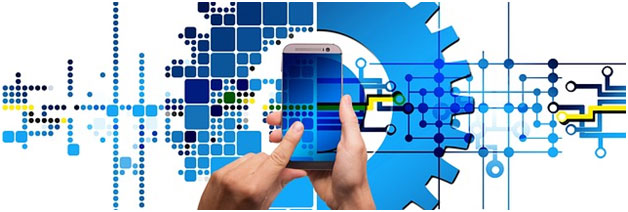
Image by Gerd Altmann from Pixabay
Job Creation and Transformation
Increased automation often causes some knee-jerk concern in some communities, alarmed about the effect these changes could have on the job market. Automation may reduce the need for staff in some industry areas, but the development, production, and maintenance of these products and their companies are swiftly creating many new opportunities for jobs and career development.
As automation increases, the need for humans to complete many mundane and tedious jobs reduces. This does not necessarily mean that people currently working in these industries will be without work in the future. By eliminating lower skilled jobs that often don’t bring people much joy or work satisfaction, more pathways to skilled and interesting roles continue to open up.
For some workers, this simply means they can move up within their current industry, with opportunities to increase their skills and perform new roles. For others, becoming reskilled in new areas applicable to other industries can open up opportunities for better roles and a better work-life balance.
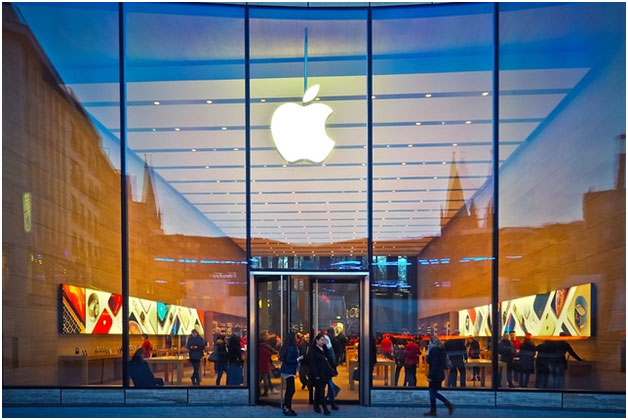
Consumerism and Market Dynamics
Since the invention of the first automated machines, companies have been able to reduce the cost of production or service to consumers, passing on those savings in the form of lower prices.
Nowhere has this been more evident than in the electronics industry, where automated factory systems took entertainment items like televisions, computers, and smart phones from luxury items to household necessities as their prices became more competitive.
As automated devices rely more heavily on wifi integration and internet capabilities, convenience is often the main driver for these products.
The Social Implications of Automation

Image by ReminderCall via DALL-E
Accessibility and Inclusion
The differently-abled community benefits tremendously from the huge technology leaps we have made in recent decades. With continuing advances in automated household items and sensory technologies for the differently-abled, quality of life can improve for people with special needs. For the elderly community, automation of safety devices and medication dispensing allows many aging people to remain living independently for a longer period of time.
As many people across all income levels have access to wifi devices, and the prices of electronic technologies continue to reduce, automated products and services have also narrowed some social socio-economic gaps. People on lower incomes and working within blue collar professions can find improvements in their work-life balance by taking advantage of:
- Telemedicine appointments so they don’t miss work
- Smart devices for time consuming chores after long work days
- Access to remote education technology for improving career options
- Financial automation services to make budgeting and paying bills a breeze
Privacy Concerns
For people reluctant to bring automation into their lives, privacy and data security issues are usually the main sticking point. As most automated devices and services work using the internet, many concerns about privacy are also relevant to all internet usage at home.
With many automated devices using camera technology, concerns around home privacy for security and other camera enabled devices is a concern for new adopters.
As automation increases, so do the technologies designed to keep our data safe. By taking basic internet safety precautions around using encrypted wifi services and practicing good internet habits, we can reduce our chances of being targeted by malware and bad actors.
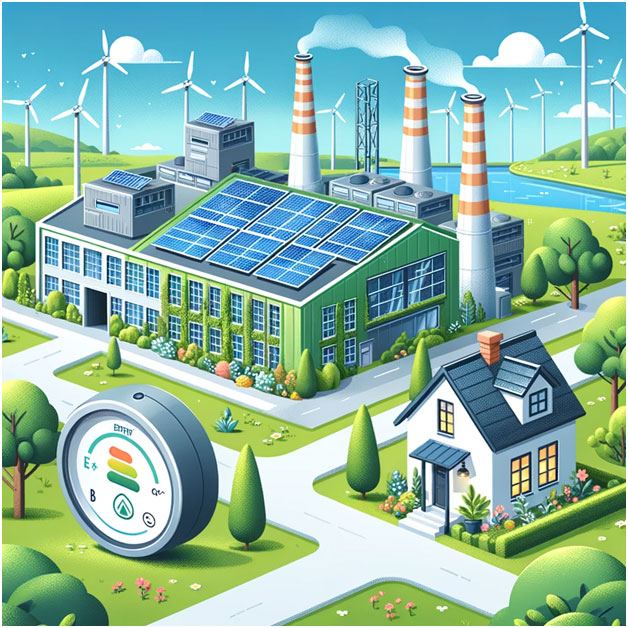
Image by ReminderCall via DALL-E
The Environmental Impact
As automated products and services allow us greater control over our environment, we can also use them to help reduce our environmental impact for both individuals and companies.
Resource Efficiency
A lot of resource waste occurs in our homes when we are not occupying them. Smart home devices allow homeowners to turn thermostats and hot water heaters off remotely when their plans change and they do not plan to be home.
By having greater remote control over our HVAC system alone, we can save a lot of money each year by adjusting our temperatures from anywhere, and setting automated schedules for our home.
The Carbon Footprint
Although many automated devices still use power, they can still help us to reduce our carbon footprint in the long run. As smart home systems can save homeowners from using more power than they would wish, similar systems within workplaces and factories can have a huge impact on the overall carbon footprint of a company.
Automation on the roads, coupled with the increase in greener technology cars will inevitably lead to a reduced transport carbon footprint overall. By using robotics and automated systems in factories, companies can make more products in a shorter time, effectively cutting down on the resources needed to manufacture the same amount of products.
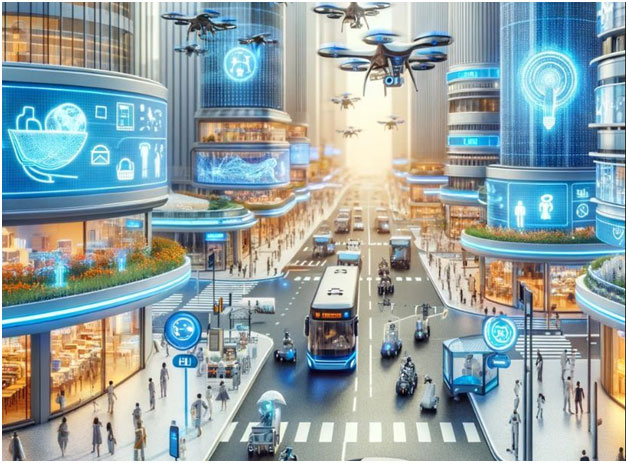
Image by ReminderCall via DALL-E
The Future of Automation
We have come a long way since the invention of our first efforts of water wheels and spinning machines, but the future of automation is just getting started. Every household and industry has the potential to improve people’s efficiency and quality of live by adopting some automated technologies.
Uncharted Territories
Many industries still rely heavily on interpersonal services such as education, legal companies and emergency services, but even these industries are seeing an increase in the use of automated services,
Schools and colleges using automated systems can more effectively communicate with parents and students, reducing confusion and streamlining systems. Classes and lectures are often scheduled online, and even school bus routing systems are often automated and software assisted for creating the most efficient routes.
With greater adoption of automation, different industries are finding novel ways to streamline their own services, reduce friction in the workplace, and save money by reducing waste.

Image by ReminderCall via DALL-E
The Interplay of AI and Automation
Many people consider the advancement of artificial intelligence and automation technologies to be two separate industries, but they are becoming and will continue to be intertwined in the future.
As artificial intelligence was mostly introduced to the public through writing and imaging services, many people have not yet experienced the capabilities of these services.
Many companies have been able to combine the need for instant customer service with AI chat technology to provide customers with options for easy contact from home to solve simple problems. A lot of people who have interacted with AI enabled software are not aware of it.
Moving into the future, the combination of AI technologies and automation will be vital for expanded services such as:
- Mapping and traffic services
- Telemedicine and health services
- Customer service options
- Transport and delivery services
- Manufacturing and design
In Conclusion
Automation is how we have reduced our workload and improved our lives for generations. In the modern era, as most people have a schedule of work and family responsibilities that often leaves very little time for a personal life, automating where we can in the household, on the road, and at work is vital for improving our quality of life. We can’t always change our daily schedule, but we can reduce the stress of many mundane tasks.
Automated services and devices are one of the newer innovations that many people don’t think they need, and later wonder how they ever lived without it. The small amounts of life friction, like keeping track of health records, doing chores, and ordering household items can all add up to more stress than we imagine. By using automation where possible, we can remove so many items from our to-do lists and start to spend our time on the things that really matter to us and enrich our lives.
Resources
- Automation in General & Historical Context:
- IEEE Spectrum: As a respected publication by the Institute of Electrical and Electronics Engineers, it offers detailed articles and research on automation technology, including its historical development and current trends.
- Home Automation:
- CNET Smart Home: CNET provides comprehensive reviews and the latest news on smart home devices and technologies, offering valuable insights for readers interested in home automation.
- Transportation Automation:
- National Highway Traffic Safety Administration (NHTSA) – Automated Vehicles for Safety: This government site provides authoritative information on the safety and regulations of automated vehicles, which is pertinent to your section on transportation automation.
- Healthcare Automation:
- HealthIT.gov: As the official site of the Office of the National Coordinator for Health Information Technology, it offers extensive information on electronic health records, telemedicine, and healthcare automation technologies.
- Environmental Impact of Automation:
- The Environmental Protection Agency (EPA) – Smart Sectors: Technology: This resource provides valuable insights into how technology and automation are impacting environmental management, aligning well with your section on the environmental impact of automation.